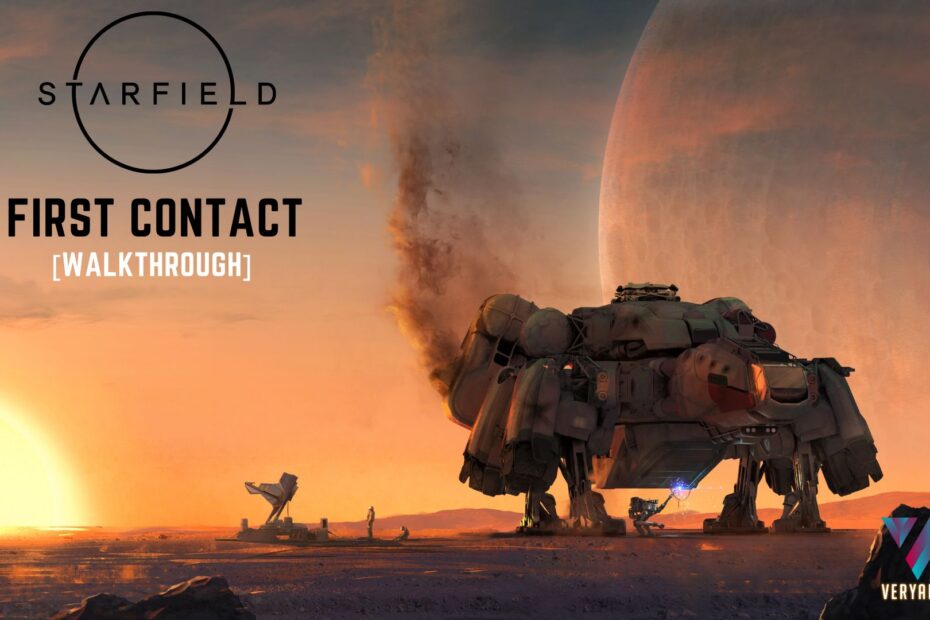The "First Contact" side quest in Starfield sets players on an intriguing adventure intersecting lost human colonies and filled with provocative choices echoing timeless philosophical quandaries. By sending you to negotiate between the crews of Porrima II and the antiquated yet advanced Earth Colony Ship (ECS) Constant, this quest holds up a mirror to humanity‘s tireless search for connection and purpose amid the indifferent mystery of space.
Peeling back the hidden allegories and subtle nuances within First Contact ultimately points to parallels with schools of philosophy focused intensely on defining morality, truth, leadership, and existence itself. By shedding light on these deeper connotations, players can better appreciate Starfield‘s maturity while evaluating their preferred resolution. Let us decode First Contact‘s strands of meaning and ground its fictional scenario in structures of real human reasoning.
The Constant‘s Voyage Mirrors Scientific Theory on Interstellar Travel
While obviously fantastical, the 200 year journey of the ECS Constant surprisingly aligns with some hypothetical models of generational ship travel. The concept involves sending colonist groups on endless missions across cosmic distances at sub-light speeds. By utilizing suspended animation, embryos, and breeding subsequent generations in transit, far distant stars become reachable over enduring timescales.
Current theories around propulsion methods, essential spacecraft resources, minimum colony population thresholds, and sustainable social structures needed for such unfathomable journeys sync surprisingly well with details provided about the Constant‘s origins and operation.
While clearly outpacing current human capabilities, the spaceship‘s blend of futurism with just enough basis in real physics concepts allows greater suspension of disbelief to become invested in their crew‘s fate across two centuries stranded among the stars after Earth‘s collapse. This lens clarifies the Constant‘s place aptly as a projection of aspirational scientific vision and space escapism.
Contrasting Outcome Philosophies: Utilitarianism vs Individualism
The divergent resolutions of First Contact fundamentally pivot around moral quandaries of community needs versus individual liberties as viewed through ethical philosophy frameworks like Utilitarianism and Individualism.
For example, settling the Constant crew on Porrima II favoring maximum happiness through compromise and shared sacrifice of resources mirrors Utilitarianism principles about achieving the greatest cumulative benefit. This "greater good" thinking justifies temporary losses of freedom or hardship.
Conversely, funding the Constant‘s Grav Drive captaining her crew‘s destiny irrespective of planetary costs reflects Individualism focused entirely on near-absolute personal agency and self-actualization regardless of external harms. Outcomes benefit the minority often at expense to the majority.
This tension between utilitarian collectivism and individual exceptionalism factors deeply in how players ethically weight the costs, benefits, and greater purpose of their choice. First Contact‘s branching outcomes hold up an interactive mirror to philosophies guiding social contracts since antiquity.
Leadership Style Reflected Through Conflict Resolution Approach
An additional analytical lens clarifying the themes of this side quest stems from examining the style of leadership exemplified through one‘s chosen resolution strategy. Each path channels key traits common in leadership theory frameworks.
Diplomatic Leadership shown by slowly brokering peace through appeals, empathy, compromise
Visionary Leadership revealed when singularly chasing an idealistic goal amid external uncertainties
Autocratic Leadership exposed if forcefully eliminating opposition without consensus
Thus beyond purely judging outcomes on moral grounds, the quest also grants insight on a player‘s instincts for wielding authority during conflict. Your resolution approach channels foundational beliefs on whether ends justify means as well as capacity for persuasion versus coercion.
This presents an intriguing secondary breakpoint for self-reflection woven subtly into the First Contact experience.
Searching for Meaning Among the Stars
Stepping back from side quest mechanics, the broader humanistic themes permeating First Contact symbolically explore why we quest for community and purpose under immense existential duress.
Both crews wrestle not only over resources but reconciliation after lifetimes adrift beyond former homes in pursuit of uncertain higher callings. First Contact provokes players to reevaluate what ultimately maters when stripped of all familiar anchors society provides.
In this view, cooperation symbolizing unity and actualization enabling freedom emerge as instruments seeking vestiges of purpose and belonging amid the cold endless unknown. This echoes existentialist dilemmas from philosophers like Camus and Sartre grappling with locating meaning within indifferent environments, absurd challenges, and anguish when former societal cornerstones collapse.
While likely unintentional, echoes connect First Contact‘s scenario allegorically to humanity‘s desire for self-determination and reason to persist when confronting unfathomable expanses and adversities over lost generations. Surviving the external wilderness of space simulates surviving the internal wilderness of meaninglessness without social moorings.
Both the Constant and Porriman crews in some way tackle this mirror, as do players determining their fates. More than just another side job, this quest holds up reflections on why questing for community and self-direction defines humanity‘s immortal spirit through all frontiers and hardships ahead.
Final Summary and Conclusion
Whether analysed through scientific theories around space travel feasibilities, frameworks of moral philosophy, leadership stylistic traits, or existentialist questing for purpose, the First Contact side mission builds a web of allegorical meaning from many threads of real human reasoning and values testing.
Peering past the surface adventure shows parallels with history‘s greatest thinkers relevant still today. In this sense Starfield uses a side quest as a microcosm echoed elsewhere indicating its desire to provoke audiences to peer inward while gazing in awe at outward frontiers.
Of course individual players ultimately choose paths based more on roleplaying instincts than deep philosophical deconstructions. Yet broad themes permeate reflecting universal social quandaries, leadership dilemmas, existential voids, and speculative sciences making the scenario feel relevant beyond just fictional fantasy.
By parsing the strands of meaning infused within First Contact from these diverse analytical angles, we illuminate rays of insight into Starfield‘s aspirations maturing the genre by introducing provocations between gaming sessions rather than just occupying play time. This alone makes the side quest a compelling gem early hinting at epic curves ahead.
Thus whether one plays First Contact prioritizing face-value adventure gratification or plumbing analytical depths, an undeniably thoughtful experience unfolds worthy of recollection long after veering past Porrima II towards newfound secrets beckoning from beyond the horizon.




